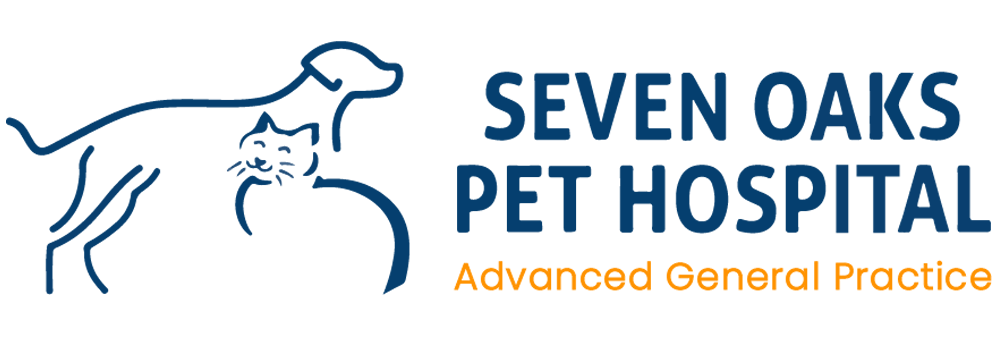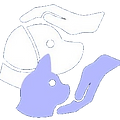Avulsion Fracture of Tibial Tuberosity
To download and print this information, please click here.
Avulsion fracture the tibial tuberosity occurs in a young animal, usually between 4-8 months of age. The tibial tuberosity serves as the insertion point of the quadriceps muscles through the patellar ligament, and avulsion results from the contraction of the muscle while stifling is flexed and the foot firmly on the ground, Such mechanism could easily occur during jumping or running and perhaps in a fall.
Surgery
Open reduction and internal fixation technique.
- A longitudinal incision is made just medial to the patella, the patellar ligament, and the tibial tuberosity.
- The blood clot and fibrin clot are removed from the original location of the tuberosity. Fracture is reduced and anchored in place with three Kirschner wires.
AfterCare
Week 1:
- Provide pain management with NSAID’s the first five days
- If a padded bandage was applied, it should be removed after five days
- Apply an ice-pack to the stifle for 10 to 15 minutes two to four times a day for the first 24 to 36 hours after surgery if no bandage is applied
- If the inflammation has resolved after 72 hours, apply a hot-pack to the stifle for 10 to 15 minutes two or three times a day if no bandage is applied
- Perform passive range of motion exercise (gently flex and extend the knee); 10 slow repetitions three times a day
- Precede and follow the passive range of motion exercise with massage of the quadriceps muscles (large muscles above the kneecap)
- Begin slow leash walks of less than 10 minutes three times a day
- Schedule a recheck to evaluate the range of motion and percent weight-bearing
- If your pet is very rambunctious we may place an off weight-bearing bandage for two weeks
Week 2:
- Apply a hot pack to the stifle for 10 to 15 minutes two or three times a day until the swelling has resolved
- Stop passive range of motion exercise if your pet is using the leg correctly
- Increase the slow leash walks to 10 to 20 minutes three times a day
- Continue massage
- Schedule a recheck 2 weeks after surgery to remove any sutures and evaluate the range of motion and percent weight-bearing
- Most patients should be walking normally by 2 weeks, but every pet is different and some may take longer
Week 3:
- Increase the slow leash walks to 20 to 30 minutes two or three times daily
- Have your pet perform 10 repetitions of sit-stand exercises three times a day
- Have your pet perform 10 to 15 repetitions of figure-of-eight walks two or three times a day, circling to the right and left
- Recheck 3 weeks after surgery if your pet is not walking normally or improving week to week.
- If your pet is 4 months or under at the time of surgery, a radiograph should be taken around 3-4 weeks after surgery to evaluate the growth plate and remove the tension band wire if one was utilized.
Weeks 4:
- At this point, your pet’s healing should be complete and should gradually return to full activity by the end of 6 weeks.
- Your pet in 4-6 weeks after surgery to have a final radiograph to evaluate healing and the growth plate function.
- The surgeon may recommend removing the tension band wire at this time if your pet is very young and the growth plate is still open.



